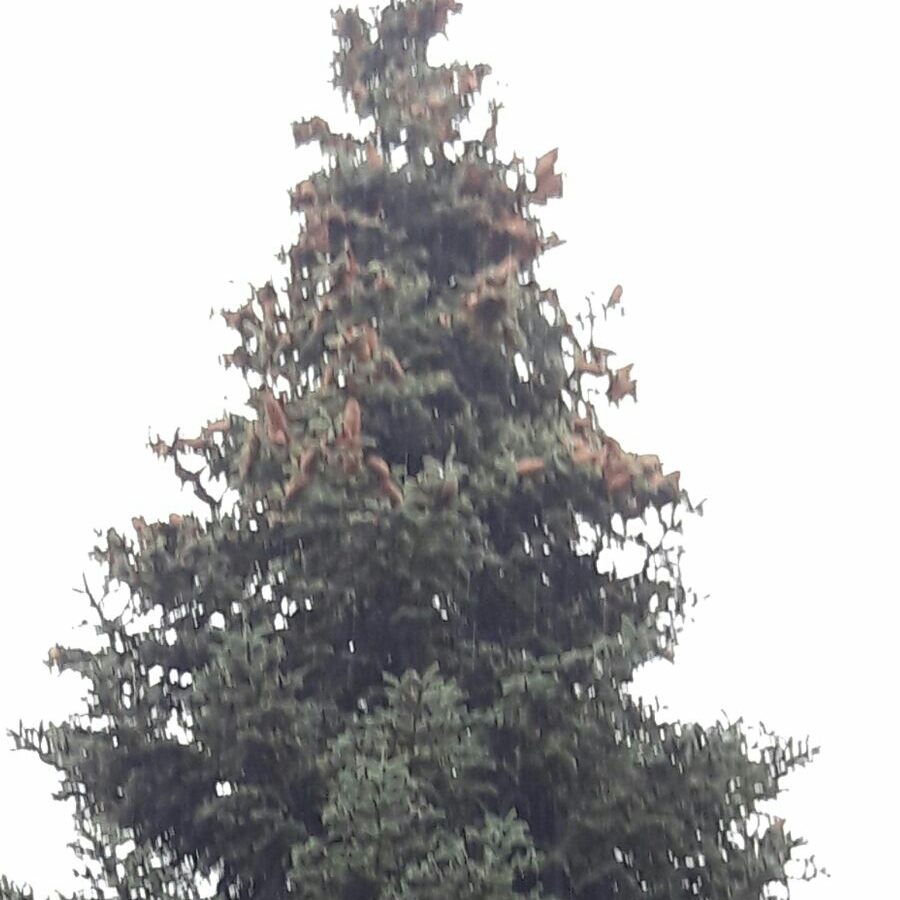
Abies magnifica
Californian Red Fir Tree
Fir trees are evergreen coniferous trees. They can be confused with other types of conifer. The way to tell a fir tree is by the way the needles grow, and by the cones. The soft needles are attached to the branch by what looks like a suction cup, and detach from the branch without leaving a peg behind. The fir tree cones grow upwards, like candles, rather than hanging down. They are softer than other coniferous trees, and they open up at the end of the season to spread their seeds. The trees can grow very large - up to 80 m. - and tend to be somewhat conical in shape. 'Abies Magnifica' typically grows at 1,400–2,700 metres elevation. Abies magnifica is a large tree which can grow to 40–60 metres tall and with a trunk diameter up to 2 metres. The bark on young trees is smooth and grey, which becomes red and fissured with age. The leaves are needle-like, blue-green' and are arranged spirally on the shoot. The tree has a slim conical shape
Contributed by @perennialgrbs
-
Full sun
-
Occasional watering
-
Full Frost Hardy: 5F (-15°C)
-
Moist and free draining
Common name
Californian Red Fir Tree
Latin name
Abies magnifica
type
Conifer
family
Pinaceae
ph
5.5 - 7.3 Acid - Neutral
Plant & bloom calendar
-
Best time to plant
full grown dimensions
 20.00 M
60.00 M
20.00 M
60.00 M
Abies magnifica
Fir trees are evergreen coniferous trees. They can be confused with other types of conifer. The way to tell a fir tree is by the way the needles grow, and by the cones. The soft needles are attached to the branch by what looks like a suction cup, and detach from the branch without leaving a peg behind. The fir tree cones grow upwards, like candles, rather than hanging down. They are softer than other coniferous trees, and they open up at the end of the season to spread their seeds. The trees can grow very large - up to 80 m. - and tend to be somewhat conical in shape. 'Abies Magnifica' typically grows at 1,400–2,700 metres elevation. Abies magnifica is a large tree which can grow to 40–60 metres tall and with a trunk diameter up to 2 metres. The bark on young trees is smooth and grey, which becomes red and fissured with age. The leaves are needle-like, blue-green' and are arranged spirally on the shoot. The tree has a slim conical shape
Planting
From Early Spring TO Mid Spring
Plant in slightly acidic soil in a sunny site. Dig a hole bigger than the root-ball, and put in some organic compost into the hole, before planting the tree.
Propagating by seed
From Early Spring TO Mid Spring
Sow seed in early Spring in a pot of seed compost. Transplant to permanent sit whn the seedling is big enough to handle, and after it has been hardened off.








